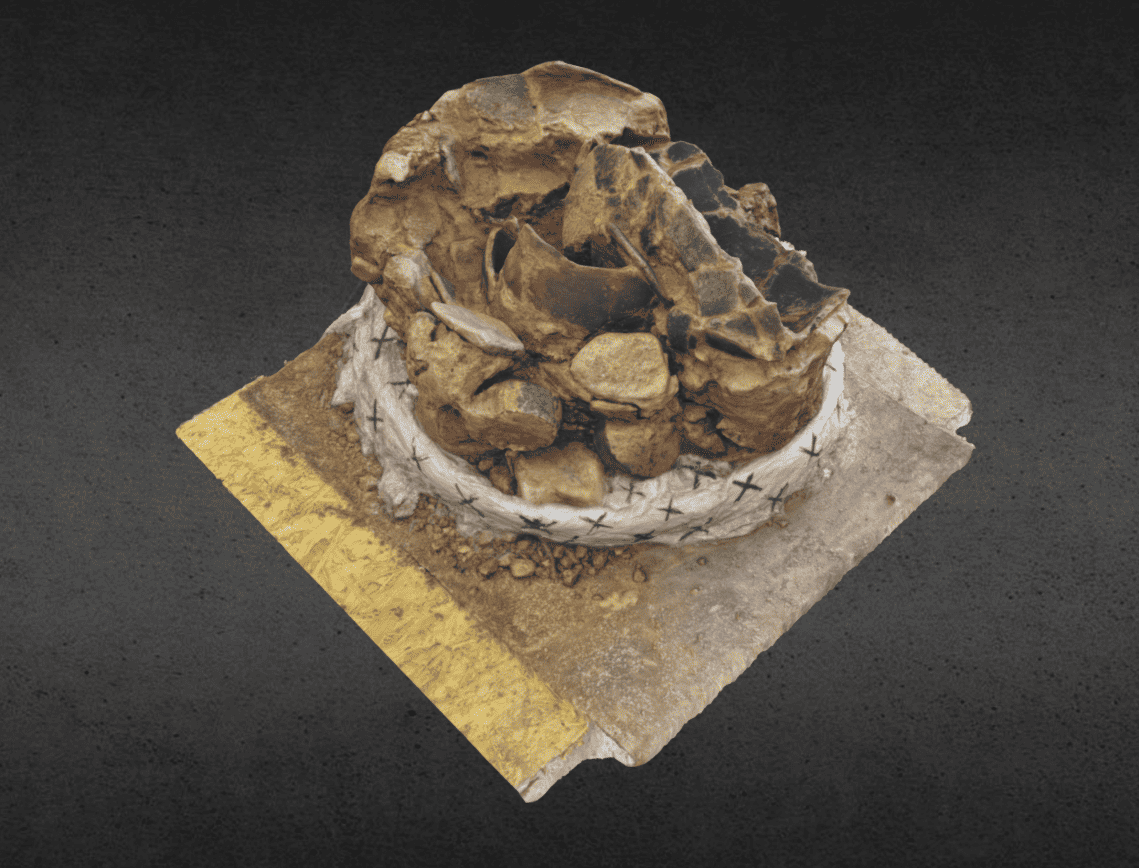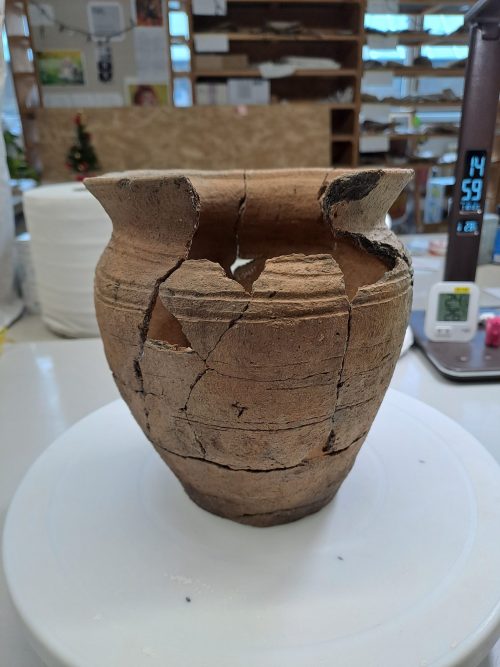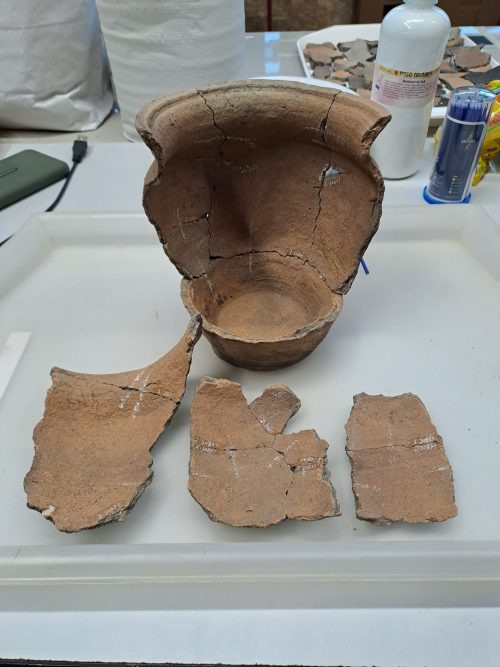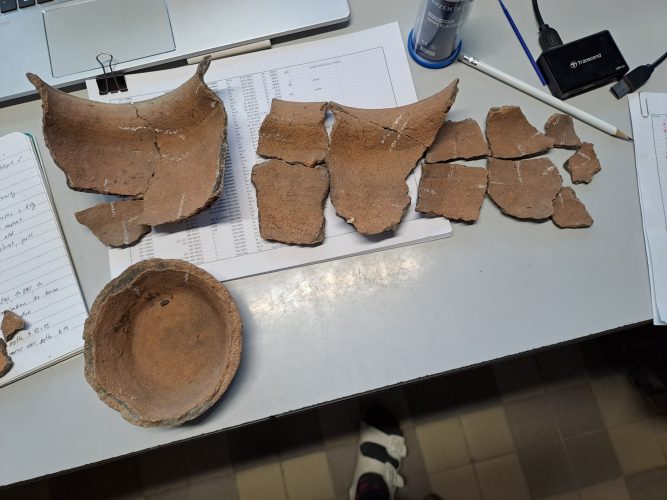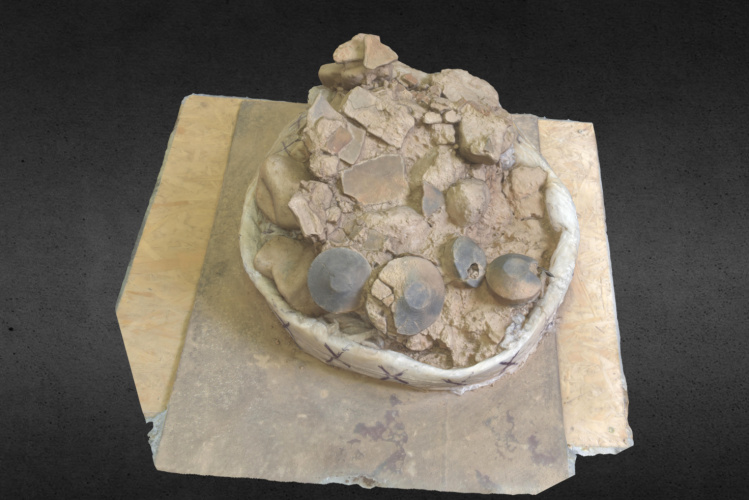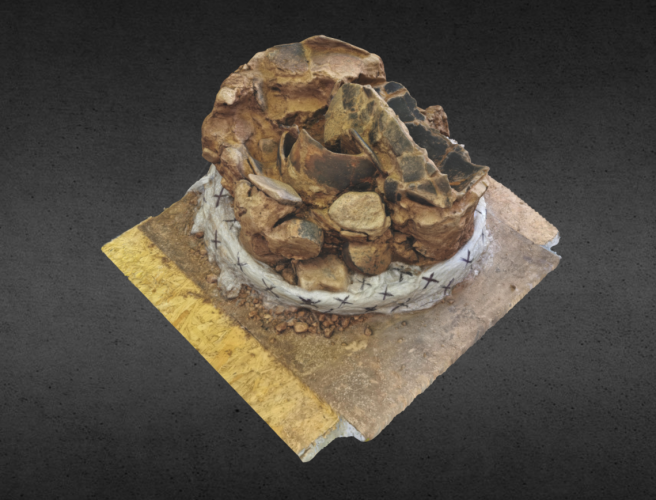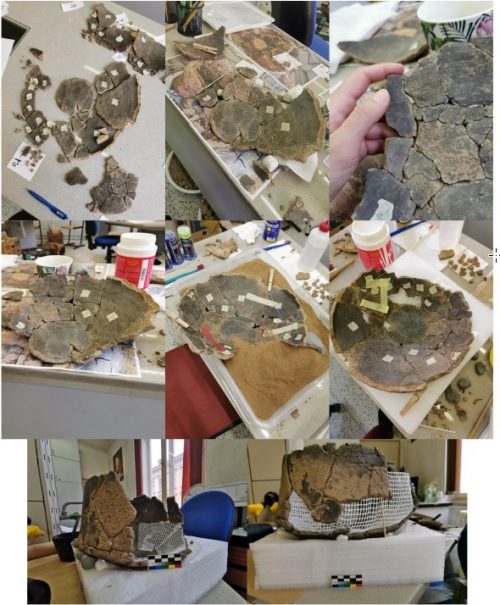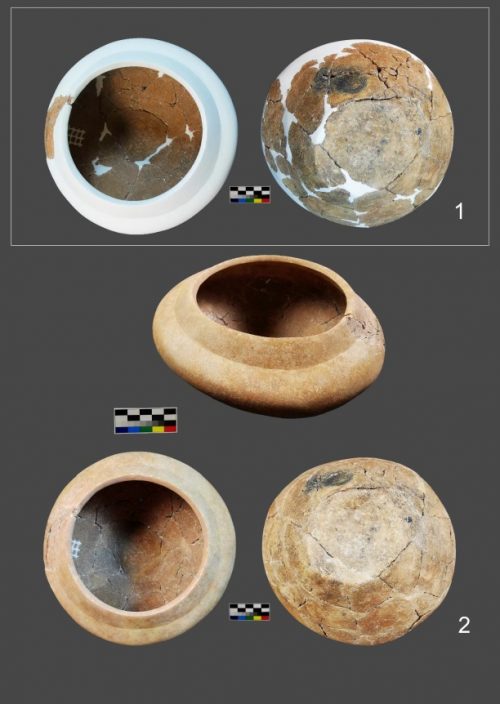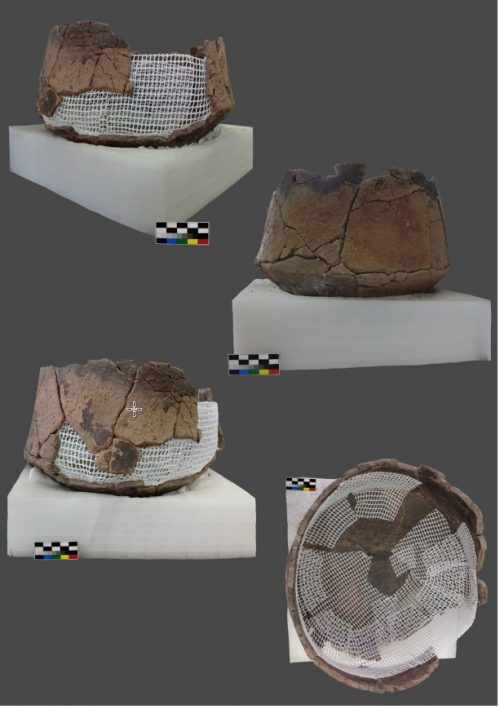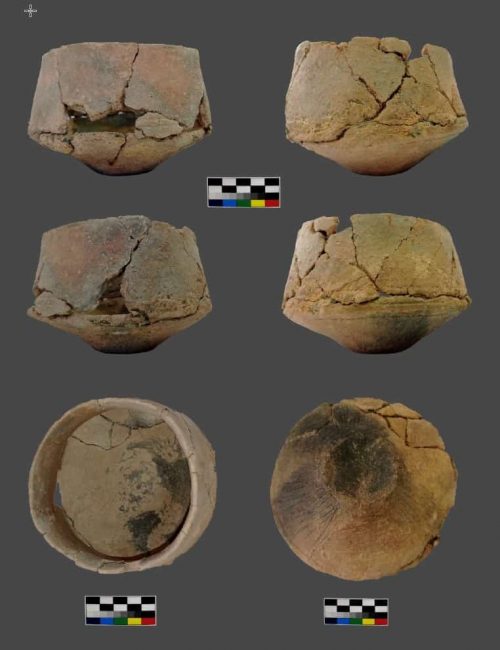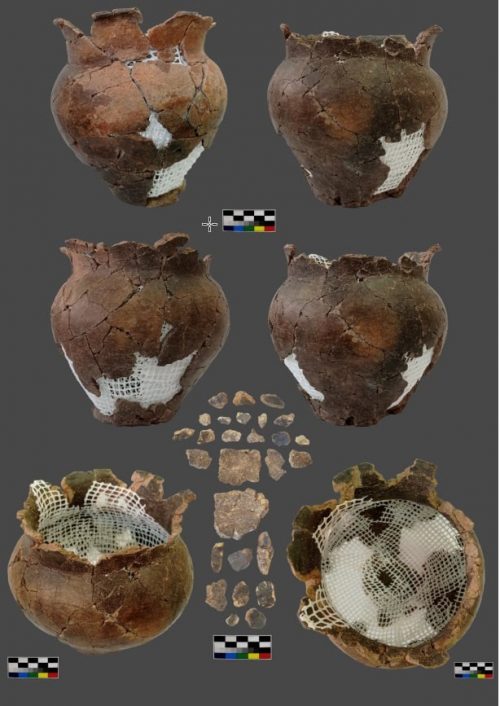Our services include:
- Washing of pottery
- Description and basic recording
- Gluing
- Reconstruction of entire shapes or parts of containers
- Replenishment of lost parts; on request, we can also color replenished areas
- Restoration of ceramic vessels
- In situ excavation of ceramic vessels
We carry out standard procedures for the processing, conservation, and restoration of archaeological ceramics. This process involves washing the ceramics. For each assemblage, we individually select a suitable procedure to avoid damage – ranging from dry cleaning to the standard washing with water. We describe ceramics according to specified parameters, and upon the customer’s request, we can create an electronic list in the required format. We glue ceramics according to the customer’s wishes; as a standard, we glue entire containers, their larger parts, and also smaller parts if they represent a documentable part of the container. We approach the replenishment of lost parts in a justified manner. The actual reconstruction of the vessels is carried out with respect to the preserved condition, reconstructing only what we can prove. Coloring of the lost part is done at the explicit request of the client. We also offer the strengthening of containers with Varaform, which is gentler on ceramics and can be easily removed for possible analyses. Its application is also much faster than plaster. Our services also include the restoration of containers and, last but not least, the careful excavation of containers picked up in the block of soil, for which we can propose and recommend suitable analyses.
Estimate of the average time required for individual tasks:
On average, it takes 8 hours to wash and an additional 8 hours to describe one banana box with pottery, altogether averaging 16 hours. However, this timeframe may vary depending on the amount of pottery, fragmentation, and the state of preservation.
The time required for gluing ceramics from residential contexts varies based on the contents of individual boxes. The first step is to check the individual bags and reconstruct what belongs together. This process generally ranges from 8 to 40 hours, depending on the size of the assemblage and the number of containers or their torsos.
The reconstruction of vessels is highly individual and fully depends on the size of the vessel, quality of pottery, state of preservation, and the amount of fragments. The gluing itself can take an average of 8 to 40 hours of work, based on the factors mentioned above. In exceptional cases, it can be even more.
The most time-consuming process is filling the losses with plaster, as plaster needs to be applied to the places of losses, so it exactly copies the shape of the container. This requires making wax models and then sanding and cleaning the plaster. The process of plaster application and correction can take between 8 and 40 hours. For large or complexly profiled containers, it can be even longer.
